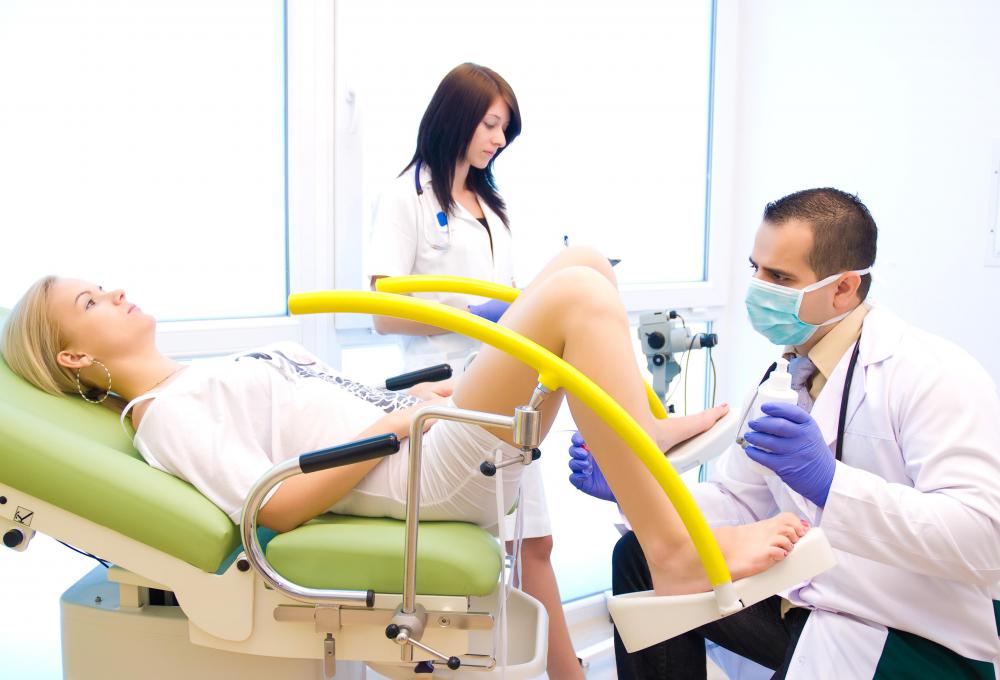At TheHealthBoard, we're committed to delivering accurate, trustworthy information. Our expert-authored content is rigorously fact-checked and sourced from credible authorities. Discover how we uphold the highest standards in providing you with reliable knowledge.
What if my Pap Smear Shows ASCUS and HPV?
A pap smear that has atypical squamous cells of undetermined significance (ASCUS) and human papillovirus (HPV) listed on it generally means that the patient has ASCUS on her cervix; however, HPV is suspected as the cause for the atypical cell appearance. Whenever HPV is present, ASCUS is a co-existent condition. This result dictates further investigation, including a colposcopy of the cervix. It is estimated that seven out of 10 sexually active females under 21 have HPV.
ASCUS is diagnosed when a pap smear slide displays cervical cells that are unusual looking when compared to normal cells from the cervix. When the pap smear report lists ASCUS-H or ASCUS-HPV, the doctor believes that the underlying cause for the ASCUS is the presence of HPV. In most cases a colpscopy is ordered.

A colpscopy is an outpatient procedure during which a cone-shaped piece is cut from the cervix and sent for biopsy. Doctors generally order a colpscopy when high-grade changes are discovered during the pap smear. The biopsy will determine whether HPV is indeed present.
Women who contract HPV, which is a sexually transmitted disease, have an increased risk of later developing cervical cancer. For this reason, it is important to get ASCUS and HPV properly diagnosed so they can be monitored. Monitoring of these conditions typically includes having pap smears more often than the general guidelines suggest.

Although there is no cure for HPV, in many regions there is a vaccination available to help prevent the spread of ASCUS and HPV. For those who do contract them, treatment is aimed at symptoms. One of the symptoms of HPV is the development of genital warts, which can be chemically removed. Pregnant women who have HPV should inform their doctor of their condition so precautions can be made during labor if symptoms are present, as there can be a risk to the baby.
Each region has its own standard of care. A pap smear that reports ASCUS and HPV mandates investigation. Some regions suggest a repeat pap smear in six months. Others move to a colpscopy following the first abnormal result.

Prevention of ASCUS and HPV associated with each other includes education. Teaching females the risks of having unprotected sex is one step in the prevention of ASCUS and HPV. Some regions have implemented prevention programs that work with area physicians and educators for the purpose of reaching young people and educating them.
AS FEATURED ON:
AS FEATURED ON:

















Discussion Comments
Well, you can still get HPV even if you have protected sex. I don't think that "teaching females the risk of having unprotected sex" is a fair thing to say. You should say, "teaching everyone the risks" because men carry HPV - that is how females get it.
A comment like that also implies that women got it because they were having unprotected sex, which isn't always the case.
Post your comments